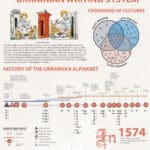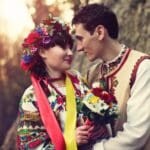Ukrainian Christmas is a celebration steeped in ancient traditions, folklore, and religious significance. Rooted in both pagan and Christian practices, the holiday reflects the country’s rich cultural tapestry. From the festive preparations to the sacred rituals, Ukrainian Christmas offers a unique blend of customs that have been passed down through generations.
The Historical Roots of Ukrainian Christmas
The origins of Ukrainian Christmas date back to pre-Christian times when the Slavic people celebrated the winter solstice, known as Koliada. This pagan festival marked the rebirth of the sun and the start of a new agricultural year. With the advent of Christianity in Ukraine in 988 AD, many of these pagan customs were incorporated into the celebration of Christmas, which is observed on January 7th according to the Julian calendar.
The fusion of pagan and Christian traditions is evident in the way Ukrainians celebrate Christmas today. The holiday is not just a religious event but a time to honor family, community, and the natural world.
Christmas Eve: Sviatyi Vechir (Holy Evening)
The most important part of Ukrainian Christmas is Sviatyi Vechir or Holy Evening, celebrated on January 6th. This night is filled with rituals and symbolism, beginning with the Kutia—a ceremonial dish made from wheat, honey, and poppy seeds. Kutia represents prosperity, peace, and good health, and it is the centerpiece of the Christmas Eve supper.
The Christmas Eve supper, or Sviata Vecherya, traditionally consists of 12 dishes, symbolizing the 12 apostles. These dishes are all meatless and include borscht, varenyky (dumplings), holubtsi (stuffed cabbage rolls), and compote. The meal begins when the first star appears in the sky, representing the Star of Bethlehem.
A unique tradition is the placement of a didukh—a sheaf of wheat—on the dinner table or in the corner of the room. The didukh symbolizes the spirits of the ancestors and serves as a reminder of the family’s roots.
The Tradition of Caroling: Koliadky and Shchedrivky
Caroling is a cherished tradition during Ukrainian Christmas, with two types of songs: Koliadky and Shchedrivky. Koliadky are sung on Christmas Eve and during the Christmas season, focusing on the birth of Christ and the celebration of the Nativity. Shchedrivky, on the other hand, are New Year’s carols, traditionally sung on January 13th, known as Malanka or Old New Year’s Eve.
Caroling groups, often dressed in traditional Ukrainian clothing, go from house to house, singing and spreading festive cheer. They are usually rewarded with food, sweets, or money. One of the most famous Ukrainian Christmas carols is “Shchedryk,” known internationally as “Carol of the Bells.”
Christmas Day and Beyond: A Time of Joy and Reflection
On January 7th, Ukrainians attend a Christmas liturgy at church, marking the official celebration of Christ’s birth. The day is spent with family and friends, sharing meals and enjoying each other’s company.
In many regions of Ukraine, the Christmas season extends until Jordan (Epiphany) on January 19th. This period is known as Sviatky and is filled with various customs, including Vertep—a traditional puppet theater depicting the Nativity story—and Jordan’s water blessing rituals.
Conclusion
Ukrainian Christmas is a vibrant celebration that reflects the country’s deep cultural heritage and religious devotion. The blend of ancient pagan customs with Christian traditions creates a unique and meaningful holiday, where every ritual and symbol has its place. Whether it’s sharing a meal of 12 dishes, singing traditional carols, or attending a church service, Ukrainian Christmas is a time of joy, reflection, and community.
This rich tapestry of traditions ensures that the spirit of Ukrainian Christmas continues to thrive, both in Ukraine and among Ukrainian communities around the world.
For those interested in experiencing a Christmas celebration unlike any other, delving into Ukrainian traditions offers a fascinating and heartwarming journey into the past and present.





